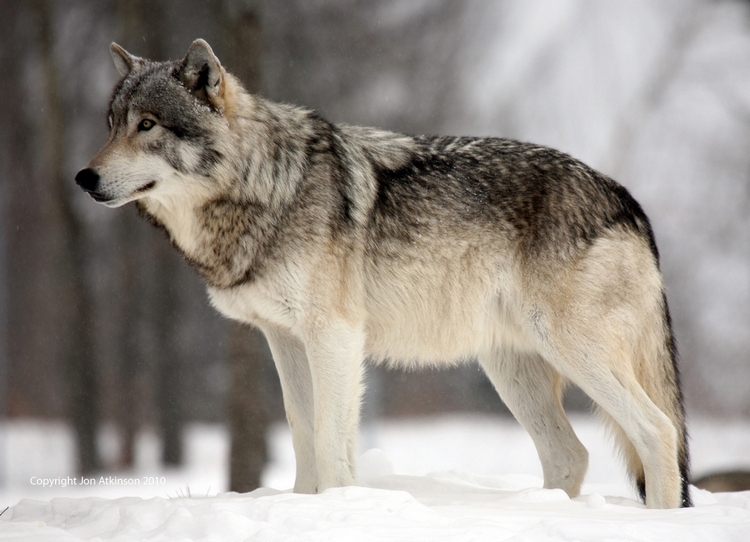Wolves Change More Then Rivers
By Nina Grigat
Wolves are carnivorous animals that primarily prey on ungulates. Wolves are at the top of the food chain. This means that any change to their population size or behaviour could affect species lower in the food chain through a trophic cascade. It is therefore important to look at the ecosystem as a whole when implementing management and conservation efforts.

How Wolves Change Rivers Video
Two common prey species of wolves in Canada are moose and caribou with moose being the most frequent prey item. Moose population numbers have significantly increase in recent years. As wolf population size exhibits a strong numerical response to increased prey availability the population size of wolves has also increased. A larger wolf population size, as well as climate change and human land use are thought to be potential causes of caribou population size is decline.
Caribou are found throughout much a Canada’s boreal forest. However; caribou population size and distribution has been declining. They are now listed as threatened in Canada. The main factor leading to caribou decline is an increased predation of caribou by wolves. This is brought on by apparent competition due to the increasing moose population. Wolves have started predating more frequently on caribou and caribou have in turn changed their behaviour to avoid wolf predation. Mother caribou avoiding suitable wolf habitat selecting instead suitable bear habitat which increased their predation risk from bears but decreased the risk of being predated by wolves.

Humans have largely induced the decrease in caribou population size. Climate change helped the moose population increase as severe winters become less common. Human caused habitat changes has also affected the landscape resulting in more early seral habitat, preferred by moose, within ranges occupied by caribou, exposing caribou to wolves. Linear features associated with the energy sector, seismic lines and oil and gas pipelines interfere with wolf foraging behaviour. Using these human made “highways” wolf hunting in enhanced by increased visual and olfactory encounters with caribou.
Caribou conservation effects have been diverse. Protection of habitat, primarily old-growth subalpine forest that provide arboreal lichen which caribou depend on during winter was one of the first conservation efforts. Wolf culling has also been implemented in Canada to reduce predation of caribou by wolfs. As the caribou population is still declining, it would appear these methods are not working. With such a complex system of organisms it is difficult to determine a method of management and conservation that balances the ecosystem.


Recent Comments